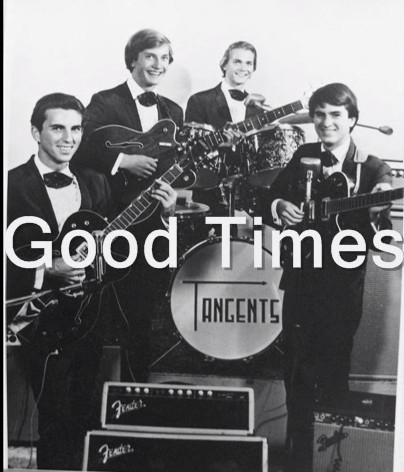

YES,THE
GOOD TIMES AND THE TANGENTS. Janesick did not start his working
career as an engineer, but as lead guitar in the 1965 music
group, The Tangents. The Tangents
recorded four songs in 1965: 2 originals,"Good Times" and "Till I Came
Along" and 2 covers of "Hey Joe" and " Stand By Me". Band members
were: Bob Shelton, lead guitar & vocals; Terry Topolski, bass;
Warren Brogie, drums; & Jim Janesick, lead guitar.
Unfortunately (but fortunately for the world of astronomy), the Viet
Nam war caused the band to break up and Janesick entered Jr.
college to catch up on basic learning not gathered in high school.
After two years transferred to Cal Poly Pomona to receive a BSEE
degree. Later he entered university of California at Irvine (UCI)
leaving with MSEE in lasers and masers. After UCI he was employed
by the Jet Propulsion Laboratory (JPL) which is operated by the
California Institute of Technology (Caltech) for the National
Aeronautics and Space Administration.
Listen
to a little 45 record music by clicking on the URLs below (for you
younger folks, 45s were small-sized records with big holes in the
middle.
https://www.youtube.com/watch?v=MS_kXiESQTA
https://www.youtube.com/watch?v=hqgmLWtbnGk
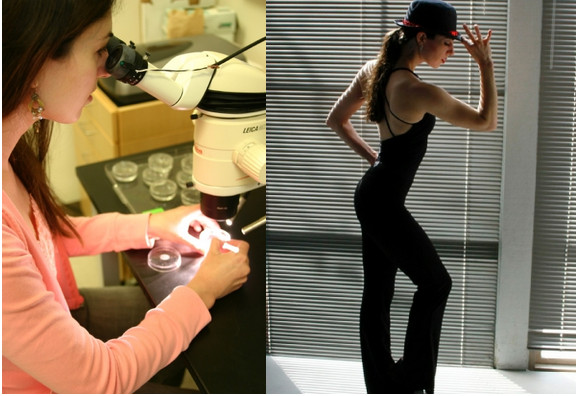

"AN APPLE DOESN'T FALL FAR
FROM THE TREE." Jim Janesick's daughter is not only a star
ballernia, but she also has a Ph.D. in molecular biology from her dad's
alma mater, the University of California at Irvine. Top that if
you can!
Mars-crossing asteroid named in honor of James R. Janesick
(4558) Janesick
88 NF. Discovered 1988 July 12 by A. Maury and J. Mueller at Palomar.
Named in honor of James R. Janesick of the Jet Propulsion Laboratory.
Janesick has been instrumental in the development of CCDs for astronomy
and, of equal importance, in the education of astronomers in the use of
these devices and of industry in establishing requirements for good
scientific imagers. His contributions have ranged from making the
detectors useful in the blue and ultraviolet to the development of
techniques for excellent charge transfer at very low signal levels, of
amplification methods with sub-electron noise and of procedures to
avoid damaging effects in high-energy radiation. (M 19337)
http://link.springer.com/referenceworkentry/10.1007%2F978-3-540-29925-7_4491
http://ssd.jpl.nasa.gov/sbdb.cgi?sstr=4558%20Janesick;old=0;orb=0;cov=0;log=0;cad=0#phys_par
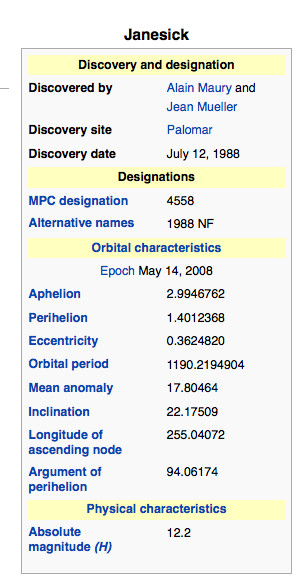
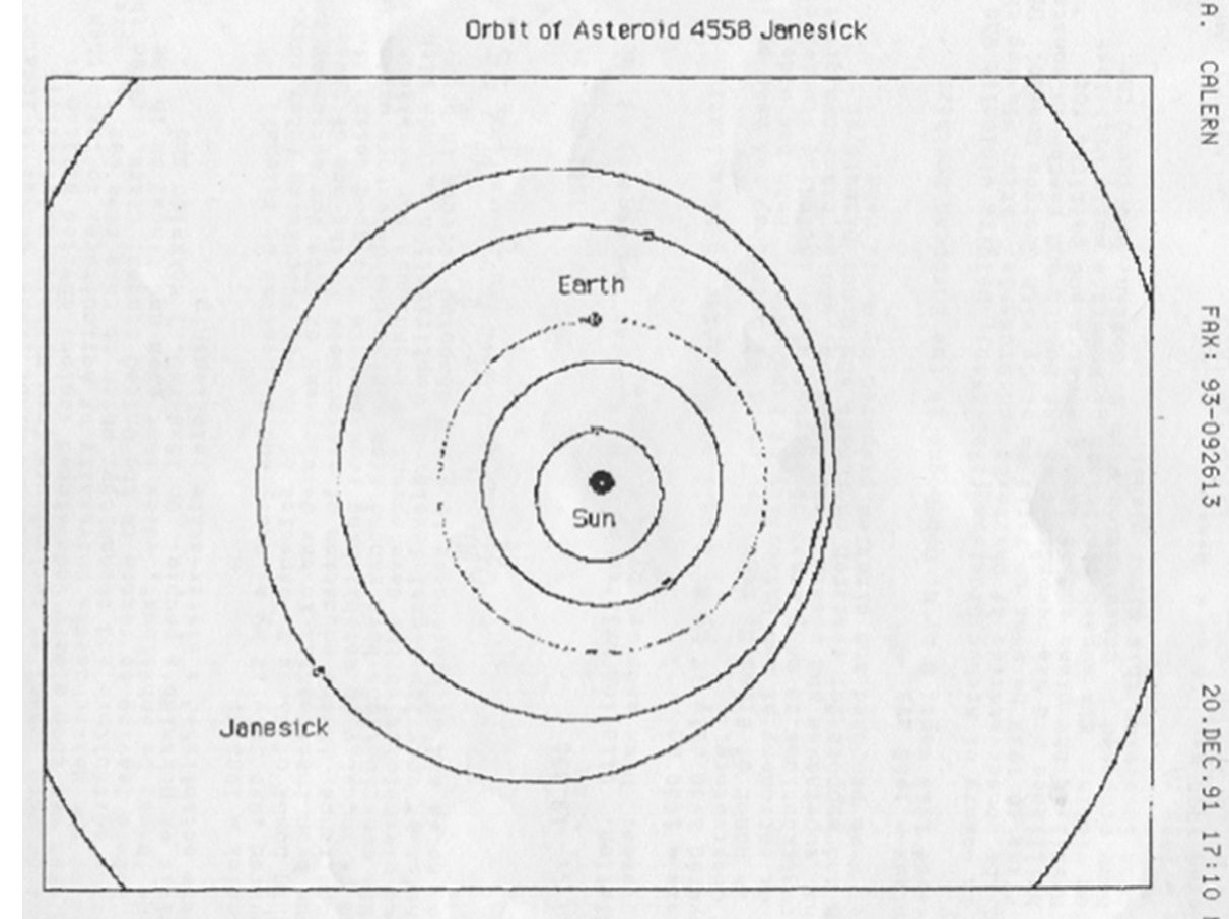
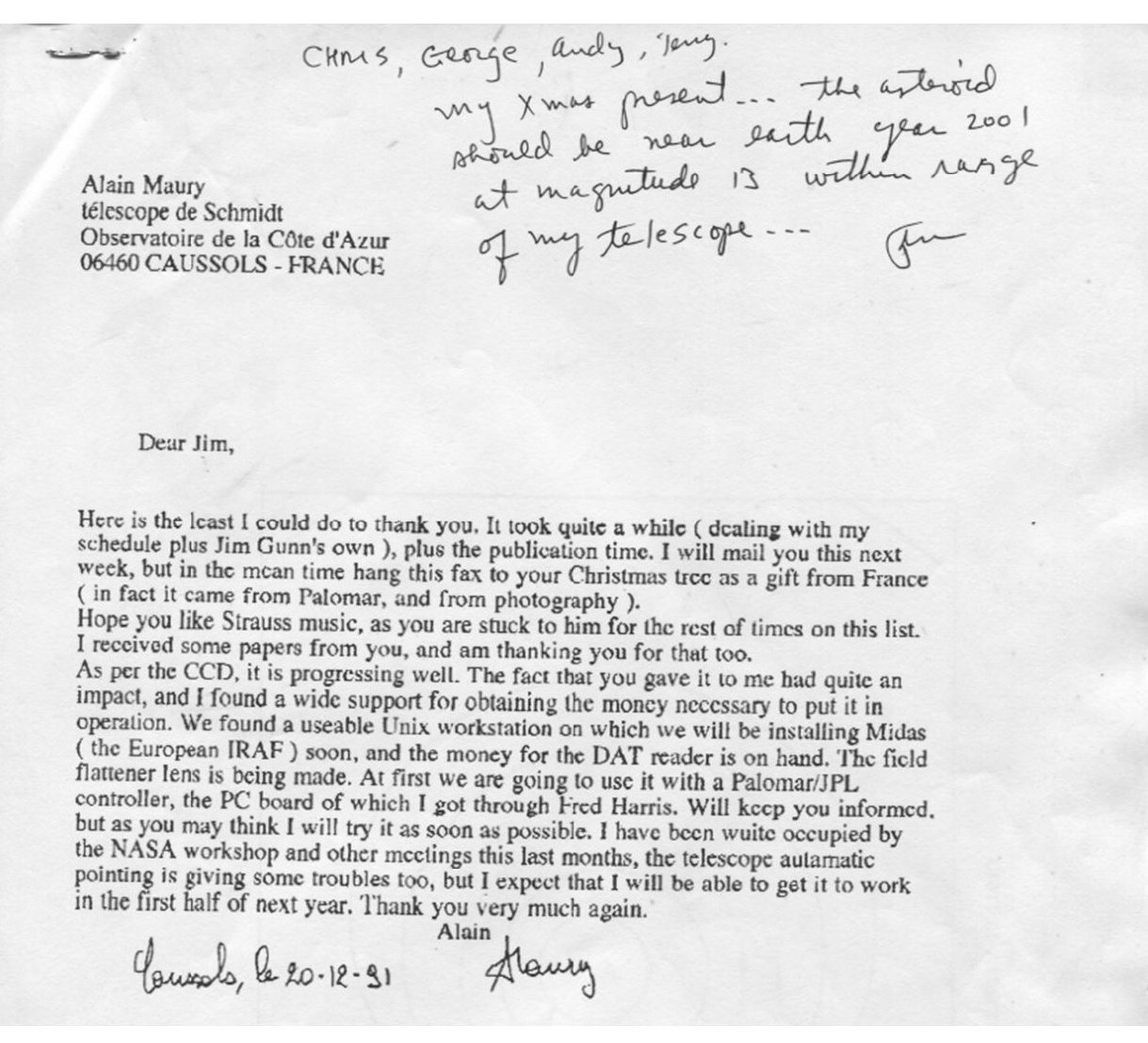
Letter by Alain Maury, co-discover of asteroid 4558, informing Janesick that the asteroid had been named in his honor.
Patents by James R. Janesick:
Photosensor with Enhanced Quantum Efficiency
Patent Number: 4,022,740
http://ntrs.nasa.gov/archive/nasa/casi.ntrs.nasa.gov/20080005928.pdf
Multipinned Phase Charge-Coupled Device
Patent Number US 4963952 A
http://www.google.com/patents/US4963952

First Sky & Telescope Article on astronomical CCDs - 1987. Read the first ever article in Sky and Telescope concerning astronomical use of CCDs by clicking on the URL below.
http://www.phy.duke.edu/~kolena/sky_on_a_chip.pdf
Below is a very brief summary we have have made of Chapter 1.1
from Janesick's 2001 book, Scientific Charge-Coupled Devices, outlining
the early history of scientific CCDs.
Scientific Charge-Coupled Devices
Chapter 1.1, Scientific CCD History
James R. Janesick
The charge-coupled device (CCD) was invented 19
October 1969 by WillardS. Boyle and George E. Smith at Bell Telephone
Laboratories. Several weeks after developing the idea they
produced a simple working model and were able to successfully
demonstrate the validity of their idea. Although the CCD was
originally intended to be a memory device, its possible usefulness as
an imaging detector soon became apparent. CCDs had a number of
theoretical advantages over film and image tubes such as being able to
stare at objects for extended periods of time if properly cooled,
extreme sensitivity to visible light and near infra red (up to 100
times more so than film), excellent linear response (film has an
s-shaped response to light showing little effect at first, then a
period of linear response, then a drop off in response, then a reversal
effect whereby added light makes a white spot on a negative rather than
a darker black spot). In addition, a CCD has a very broad dynamic
range (can produce useful images of subjects with a very wide range of
light intensity from very bright areas to very dark areas). CCDs
are geometrically stable, small in size, very rugged, consume very
little power, and the images generated can easily be amplified
and digitized. All of these characteristics combined made the
newly developed CCD the imager of choice for the proposed Hubble
Telescope (originally called the LST, Large Space Telescope).
The first commercially available CCD demonstrating
its potential was a 100 x 100 pixel CCD manufactured by
Fairchild. It was used to produce the first known astronomical
CCD image, a photo of moon craters taken by James Janesink using an
eight-inch telescope and a Heath Kit oscilloscope. Eventually, a
400 x 400 pixel CCD was developed by Texas Instruments that performed
exceptionally well compared to vidicon tubes of that time. To
demonstrate to astronomers the many advantages of CCDs over film and
imaging tubes, JPL (Jet propulsion Lab) built a Traveling CCD Camera
System which resulted in new astronomical discoveries as it traveled
from one observatory to another - it was a huge success. As a
result, demand for CCDs by astronomers grew rapidly almost
overnight. Within a few years it became the imager of choice at
most observatories. With a light sensitivity 100 times greater
than film, CCDs made visible previously invisible stars and distant
galaxies.
NASA reviewed several proposed imaging systems for
their then forthcoming Hubble Telescope and selected a JPL/Caltech
design that consisted entirely of CCD imagers. It was called the
Wide Field/Planetary Camera (WP/FC) Instrument. The first Hubble
telescope WP/FC used eight Texas Instruments 800 x 800 pixel
CCDs. Later, a second generation WP/FC with corrected lenses was
fitted with four Lockheed 800 x 800 pixel CCDs. With these
cameras the Hubble Telescope has been able to produce images all the
way to the visible horizon of the universe (see Deep Field
photo below).
On 18 October 1989 the spacecraft Galileo was
launched to study Jupiter and its moons. It consisted of an
orbiter and an entry probe. Its Solid State Imaging (SSI) camera
used a Texas Instruments 800 x 800 pixel CCD. On the way to
Jupiter it took a photo of asteroid Ida (which is about 35 miles long)
and its newly discovered moon, Dactyl. Dactyl was the first ever
asteroid moon to be discovered and is only about one mile in diameter
(see photo below).
CCDs work electronically in a way similar to the
illustration below. If you wished to determine the efficiency of
a water sprinkler system you could place a number of bucket across the
sprinkler's watering area and then measure the amount of water in each
bucket to see whether they were filled fairly uniformly. In the
below illustration an automatic system is envisioned whereby the filled
buckets are transported by conveyer belts and dumped into other buckets
on a belt which runs perpendicular to the first belts. They are
then transported to a measuring system. Imagers in your camera
work in a similar way such that the intensity of light striking each
pixel is accurately determined by measuring the charges created by
photons striking the camera imager. Every CCD imager has four
primary functions: 1) charge generation, 2) charge collection, 3)
charge transfer and 4) charge measurement. When the imager
in your camera performs these functions properly you get the beautiful
photos that have caused chemical photography to so rapidly become
obsolete.
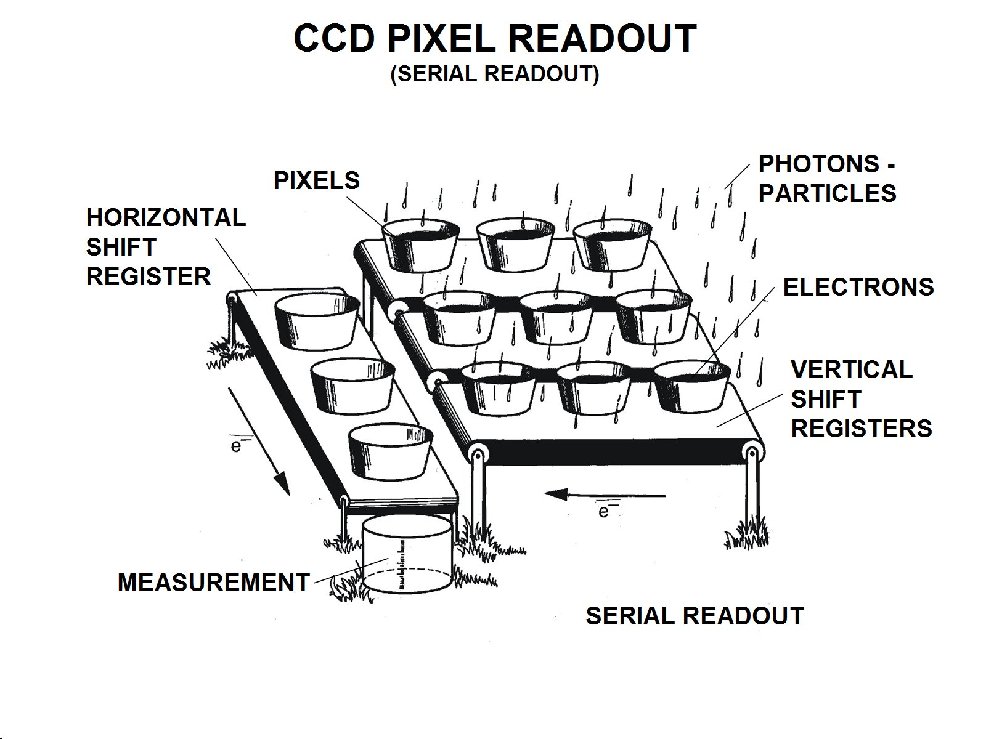
HOW CCDS SHIFT CHARGES.
Historic CCDs and CCD Photos
(Below CCD photos provided to DigiCamHistory.Com by James R. Janesick)


Hubble CCD wafer and Hubble in space.

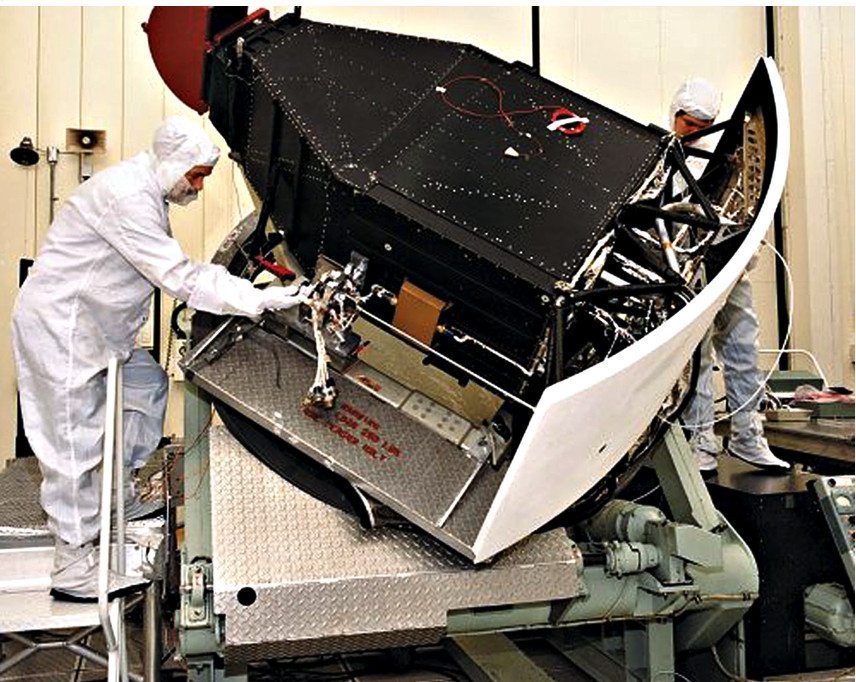
WF/PC I used eight 800 x 800 x 15 um pixel CCDs. Four narrow
fields and three wilde fields are shown above with associated analog
electronics
(the missing wild field has not been installed yet). On its return to
Earth, the WFPC was disassembled and parts of it were used in Wide
Field Camera 3
which was installed in Hubble on May 14, 2009 as part of
Servicing Mission 4, replacing WFPC2. Photo on the right is the
camera system in its enclosure.
See 1990 page for more Hubble Telescope information. Photo on the left provided by James Janesick.
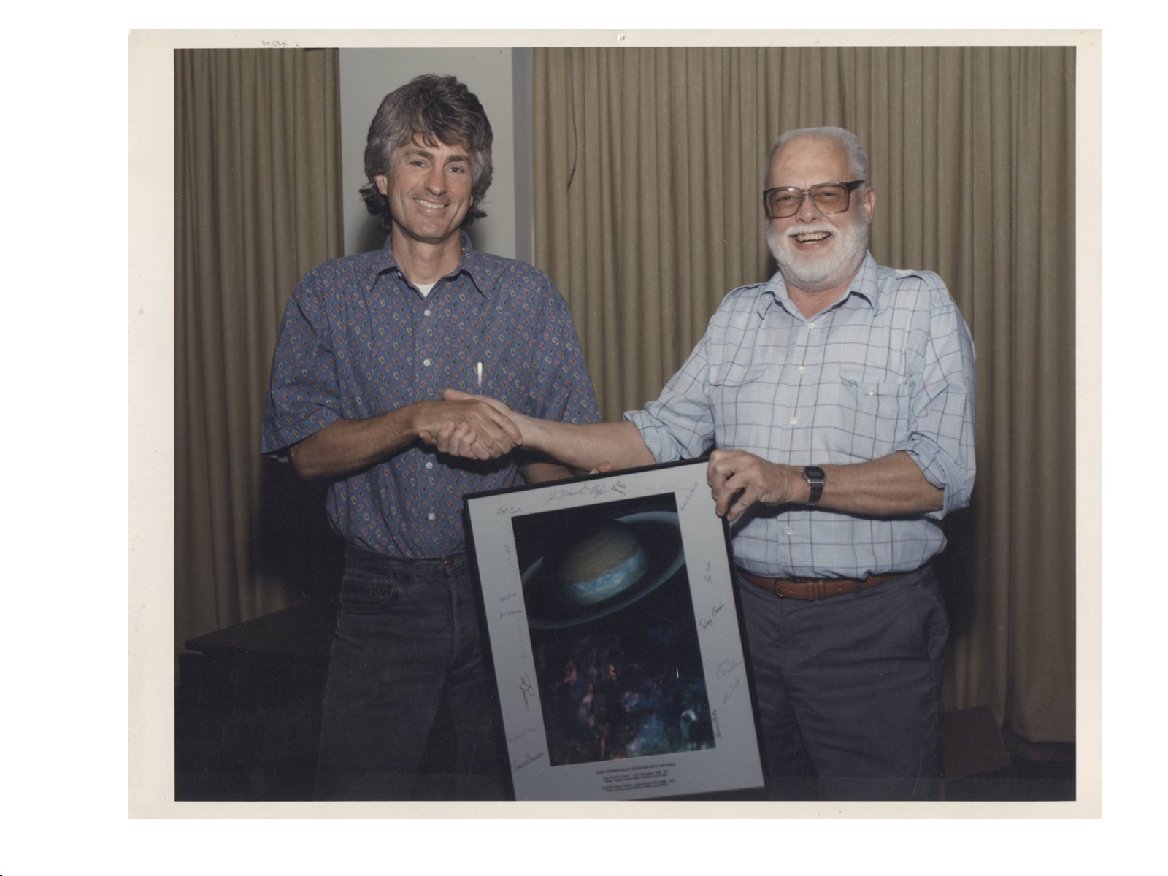
Photo is of Jim Janesick and Jim Westphal celebrating the success of the WF/PC camera used on the Hiubble Telescope.
(also see McCord / Westphal 1971 Digital Astronomy Project higher up on the 1970s page).
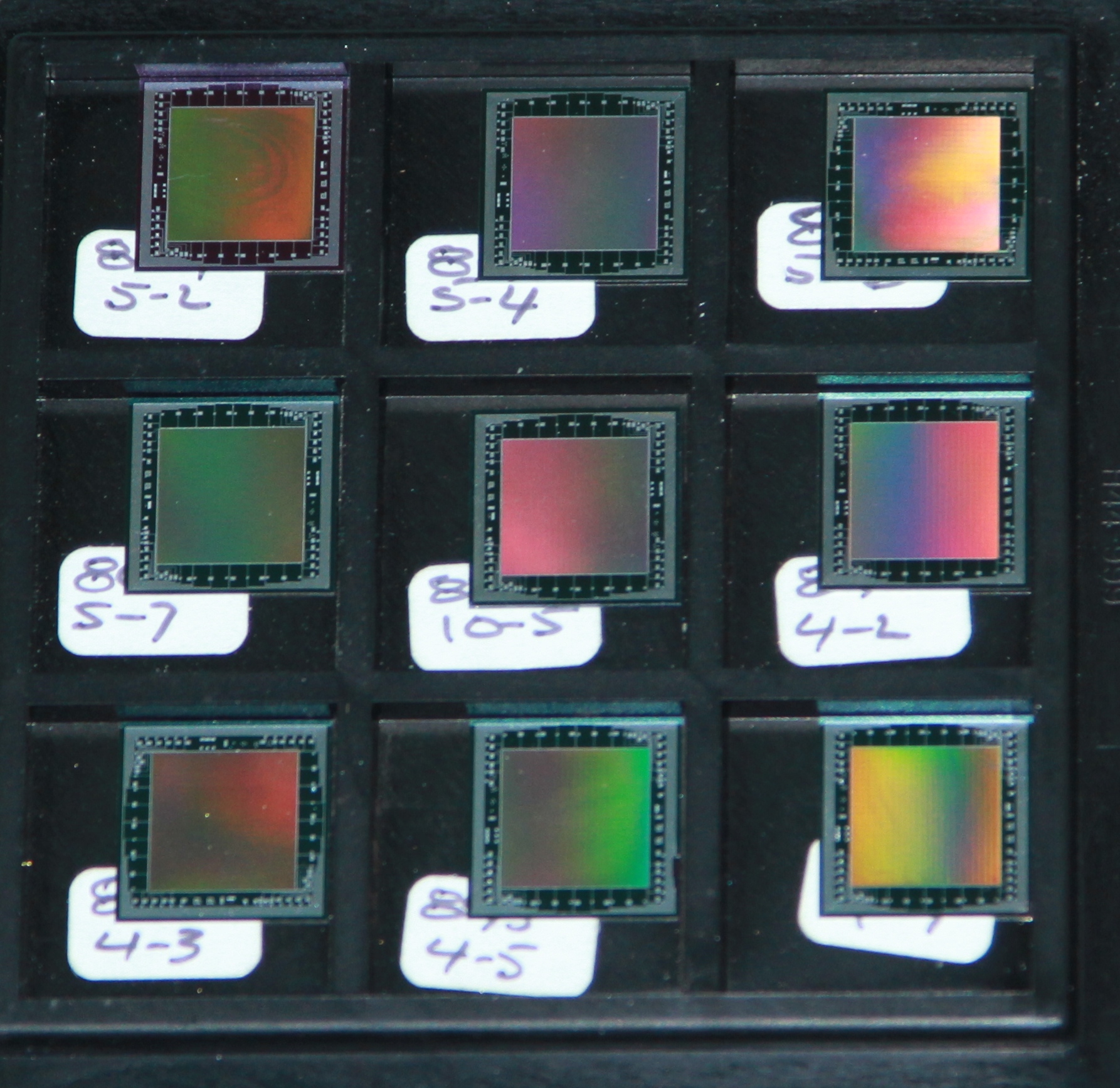

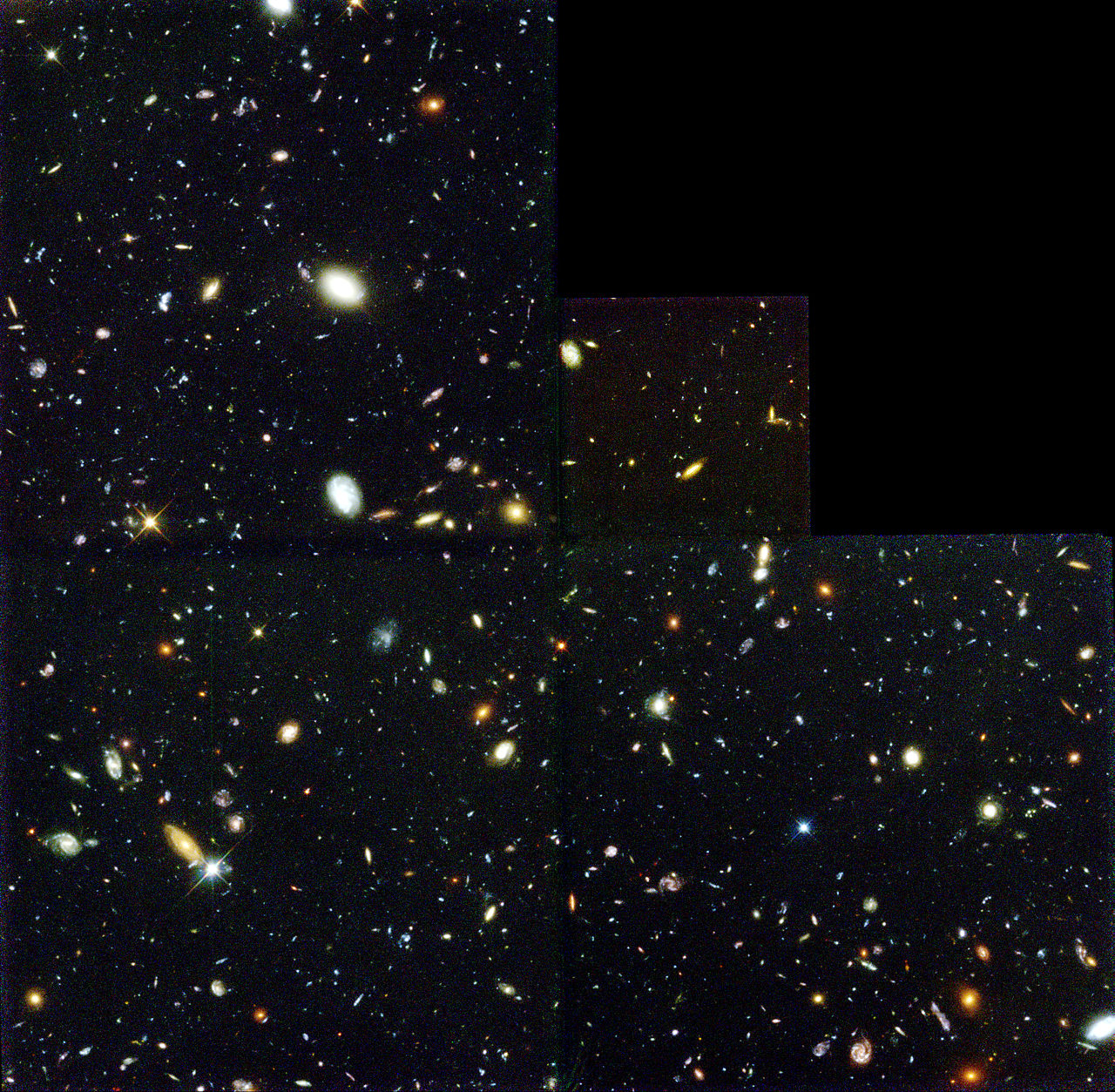

Left photo above is a group
of spare CCDs made for the Hubble
Wide Field/Planetary Camera (WF/PC) Instrument program and donated to DigiCamHistory.Com by James
Janesick. Each is about 1/2-inch square and 800 x 800 pixels (.64 MP). The
photo on the right was taken by Hubble of a small sliver
of space that appeared to be entirely empty whenviewed on film.
Due to the much greater sensitivity of CCDs versus film, more than ten
thousand previously unseen, unknown galaxies appeared. The total
number of visible galaxies now exceeds 200 billion.
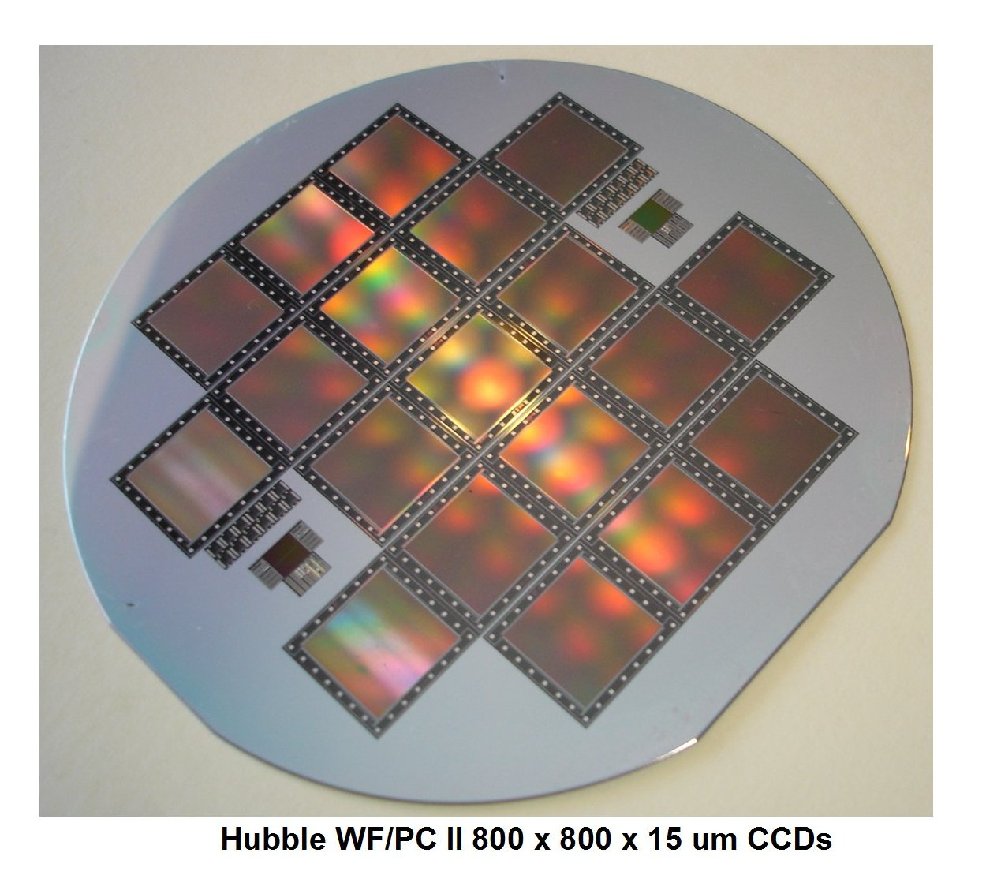
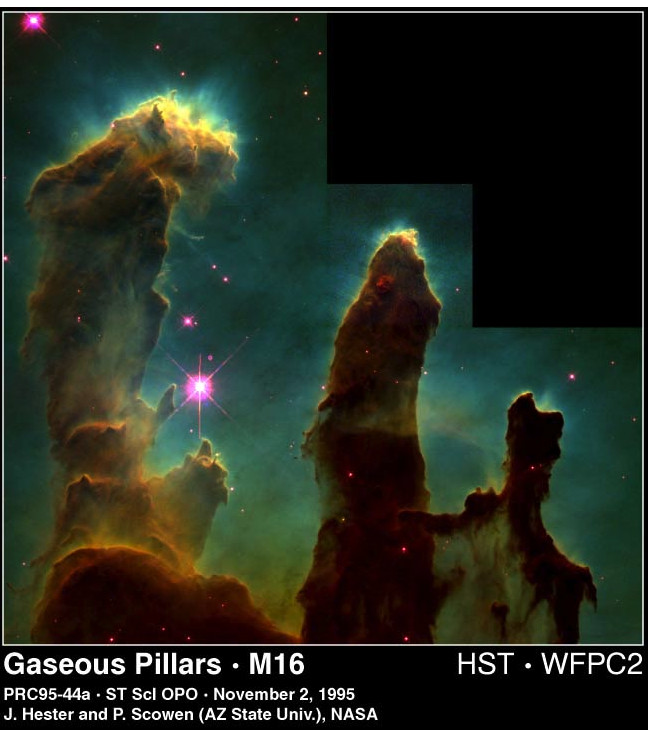
This silicon wafer contains the Hubble WF/PC II 800 x 800 x 15 um
imagers. Hubble's focus problem was fixed with the WF/PC II
camera. There were only 4 CCDs on this mission - 3
wide field (f/30) and 1 planetary(f12.0) instead of the eight used on
WF/PC I. WF/PC II was the most used instrument in the first 13
years of Hubble's life. The WF/PC II imagers and the Cassini 1024
x 1024 x 12 um imagers were fabricated at the same time (at Ford
Aerospace Newport Beach). Wafer photo by James Janesick.
Photo on the right was by the corrected Hubble camera using WF/PC II.
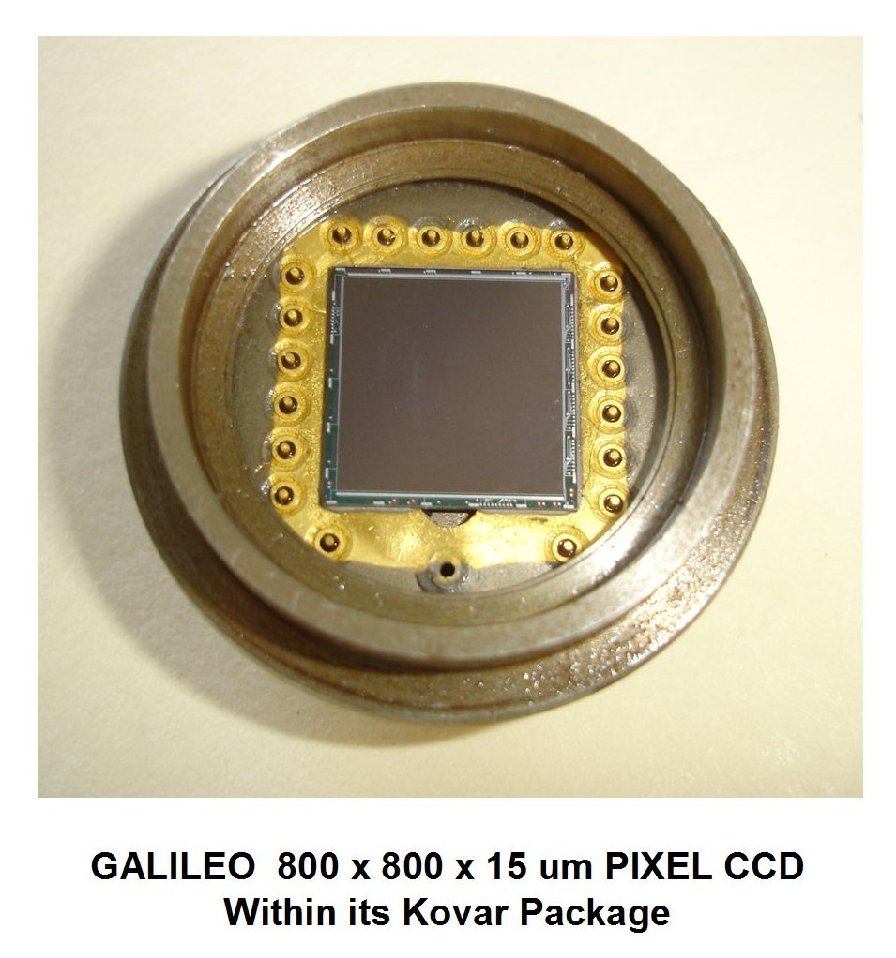

The photo on the left is the spacecraft Galileo's CCD. On
the right is Galileo's camera that took the photo of Ida and its
moon.
Years of Jupiter's intense radiation took its toll on the spacecraft's
systems, and its fuel supply was running low in the early 2000s.
Galileo had not been sterilized, so to prevent contamination of
Jupiter's moons, a plan was formulated to send it directly into the
planet. Galileo was intentionally commanded to crash into
Jupiter, which eliminated the possibility it would impact Jupiter's
moons and seed them with bacteria. In order to crash into
Jupiter, Galileo flew by on November 5, 2002, during its 34th
orbit, allowing a measurement of the moon's mass as it passed within
101 mi of its surface. On April 14, 2003, Galileo reached its
greatest distance from Jupiter for the entire mission prior to orbital
insertion, 16,000,000 mi, before plunging back towards the gas giant
for its final impact. At the completion of its 35th and final
circuit around the Jovian system, Galileo impacted the gas giant in
darkness just south of the equator on September 21, 2003. Its impact
speed was approximately 107,955 mph.The total mission cost was about
US$1.4 billion. (James R. Janesick)
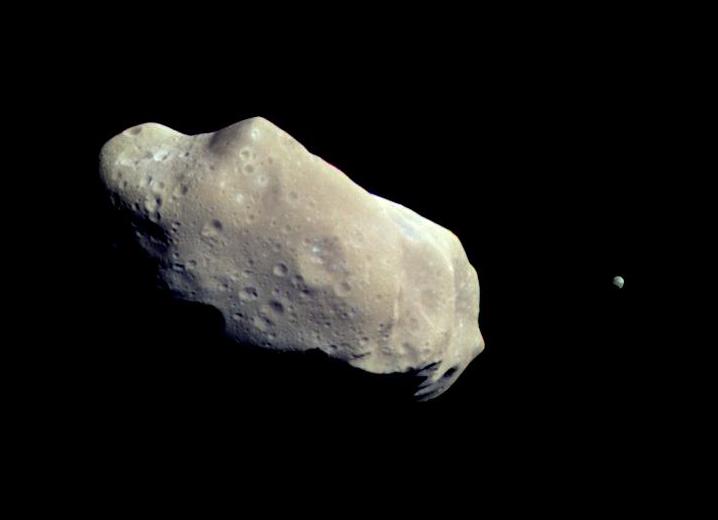

This image is
of the asteroid Ida and its small moon Dactyl in a photo taken by the
spacecraft Galileo, the first of an asteroid with its own moon.

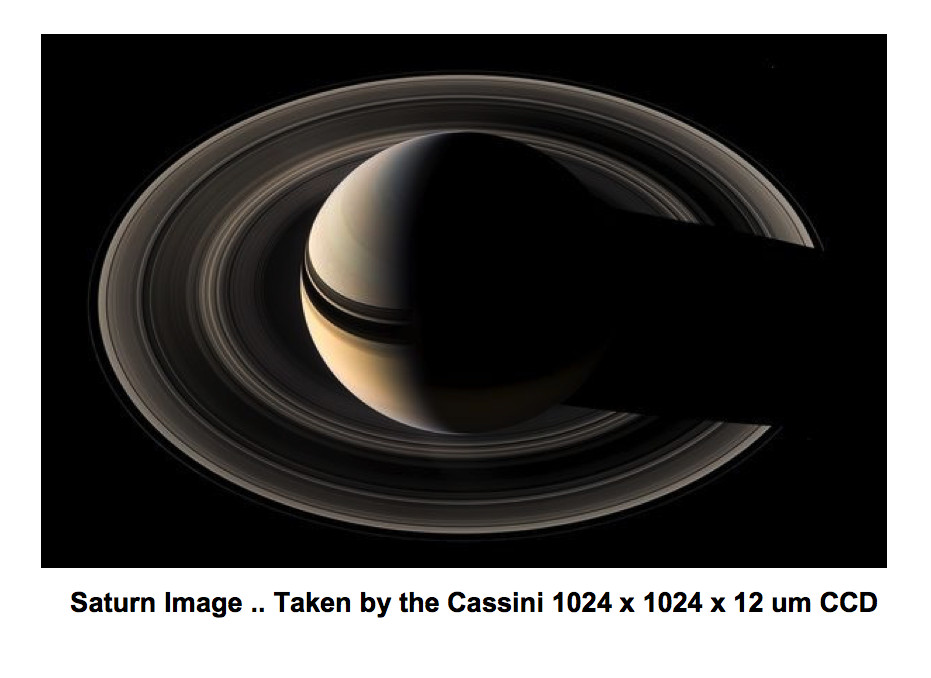
The photo on the left is the spacecraft Cassini's CCD. The photo
on the right is of Saturn taken by the spacecraft Cassini.

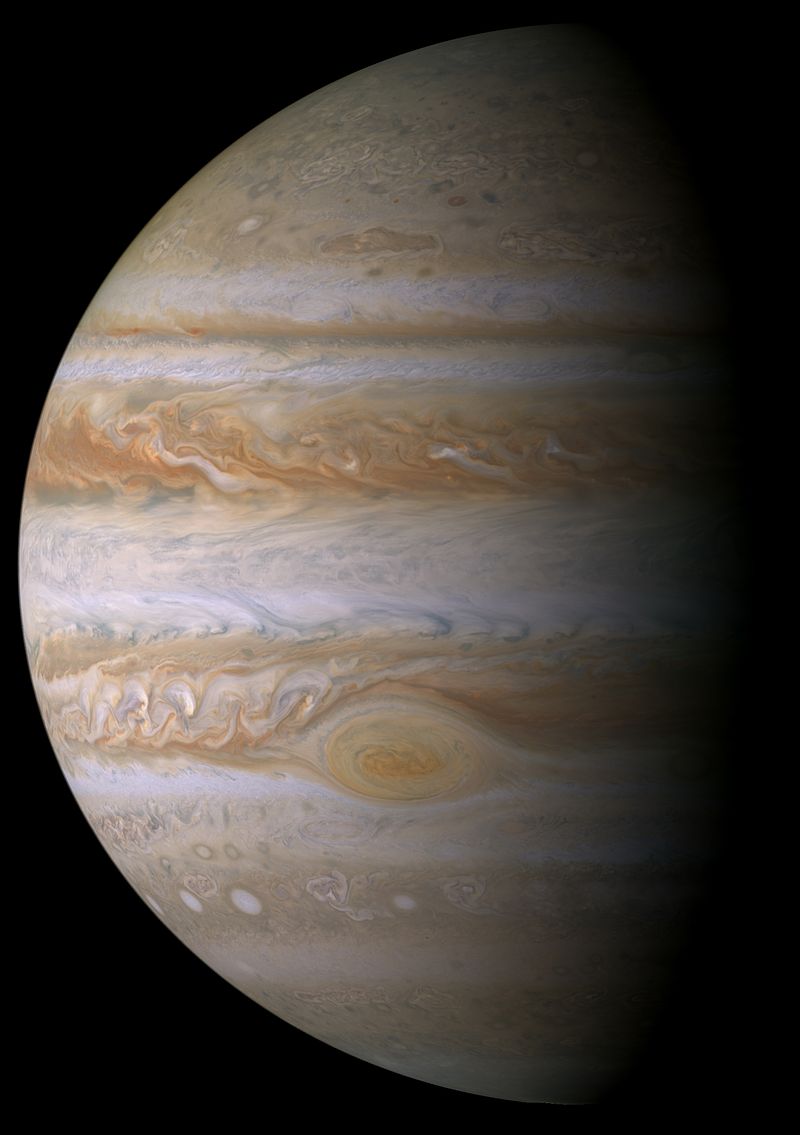
Spacecraft Cassini and image it took of Jupiter.
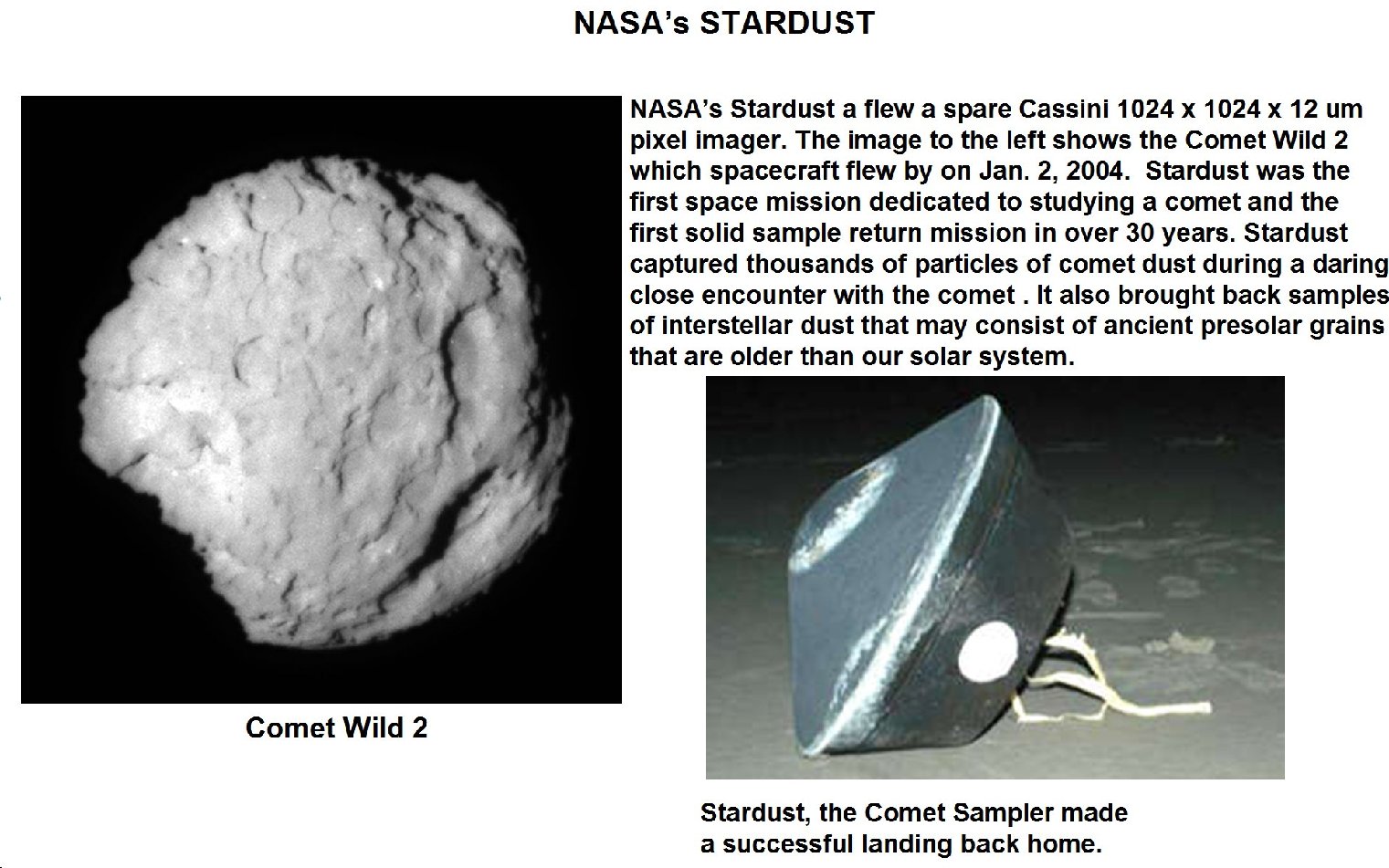
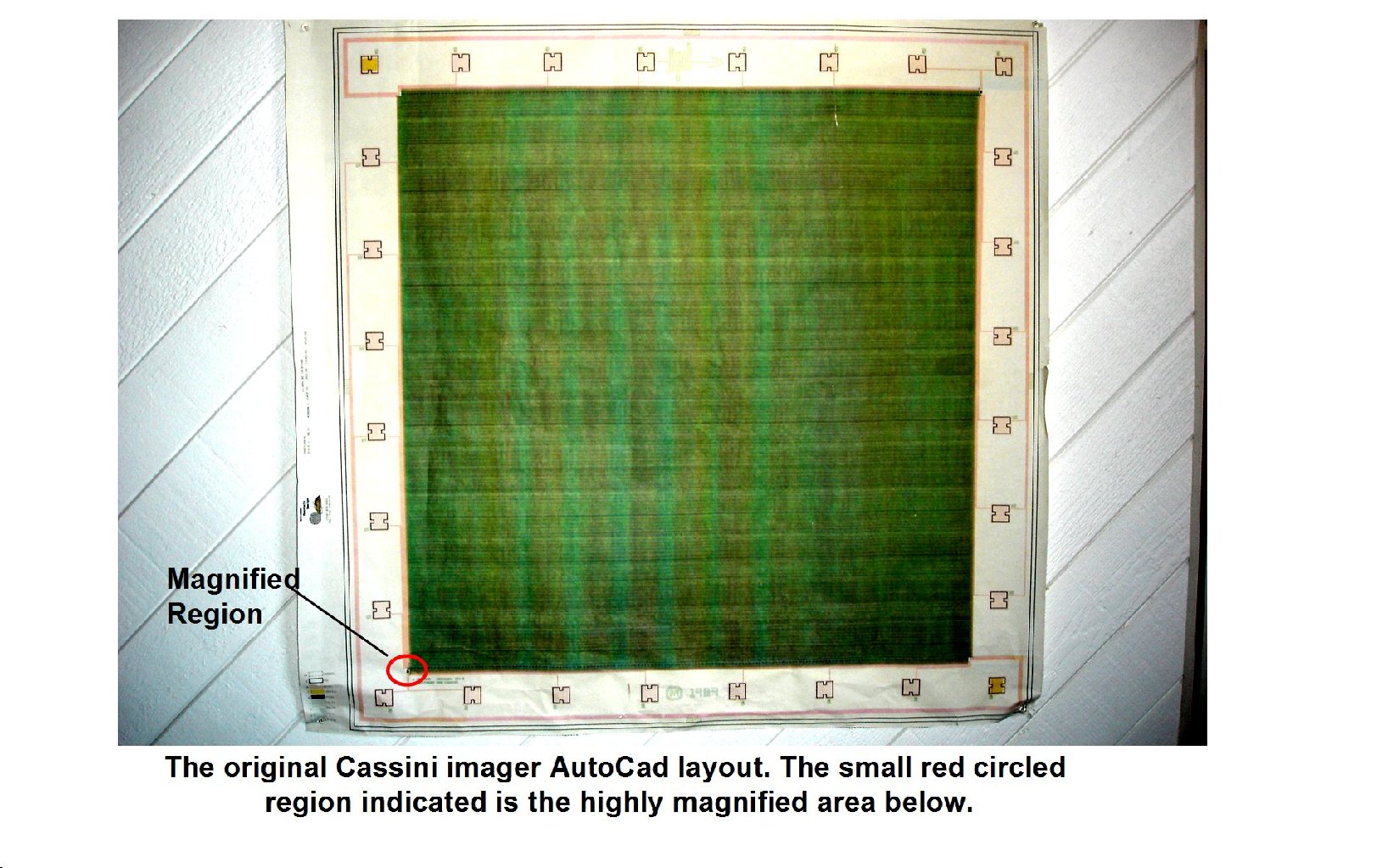
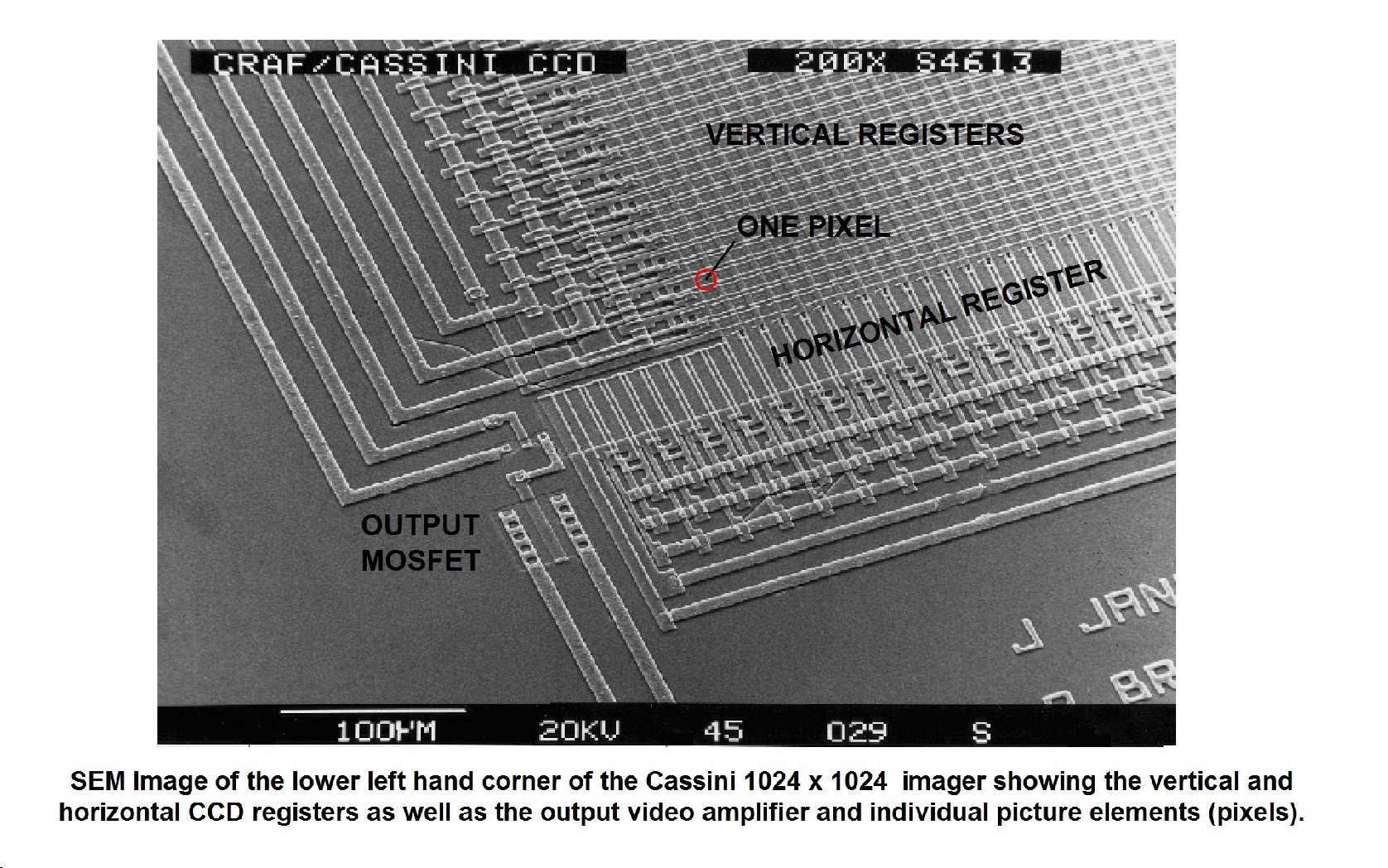
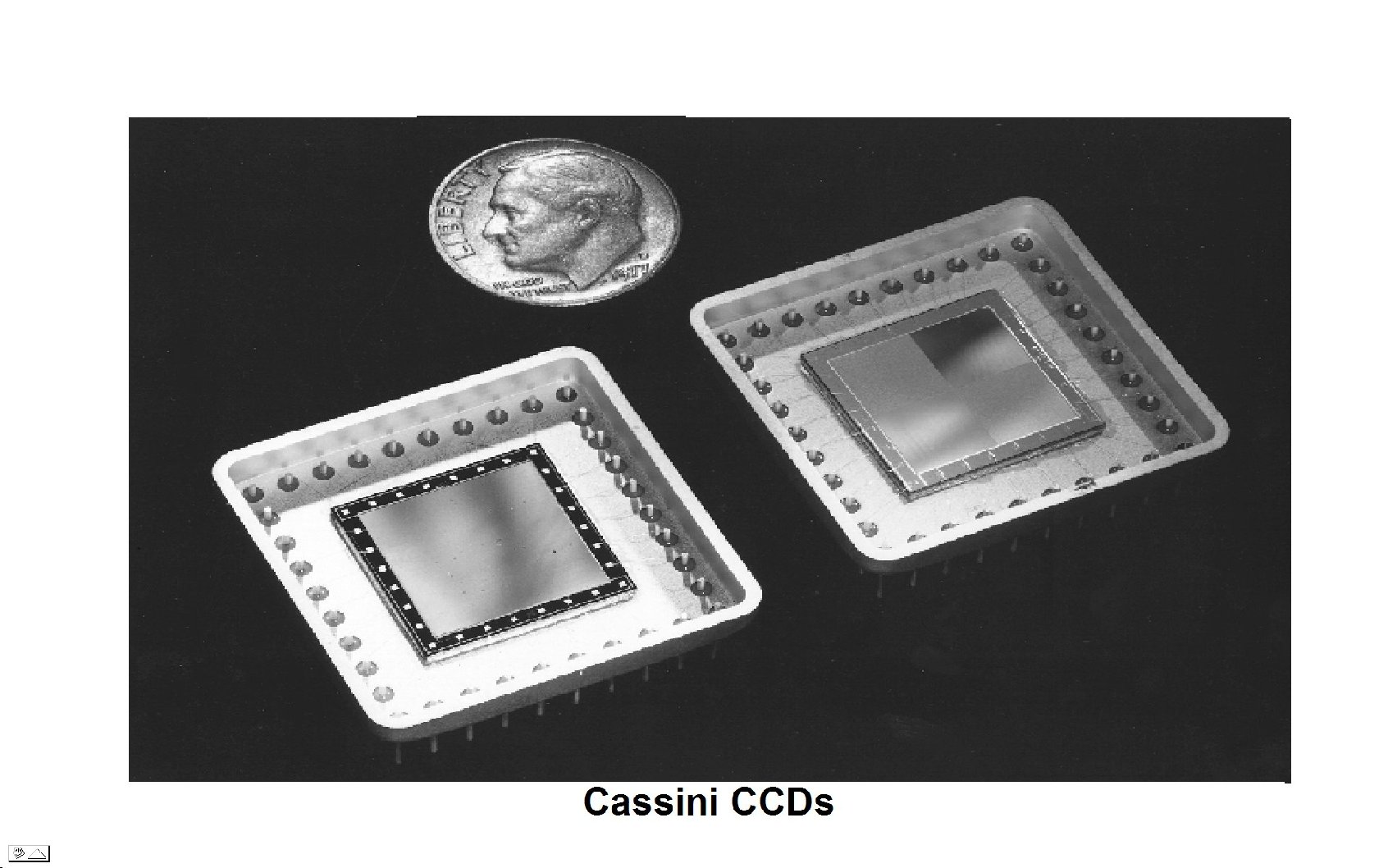

The Ranger program was a series of unmanned space missions by the
United States in the 1960s whose objective was to obtain the first
close-up images of the surface of the Moon. The Ranger spacecraft were
designed to take images of the lunar surface, transmitting those images
to Earth until the spacecraft were destroyed upon impact. Note
the alignment marks on the front of the tube match those on the
picture. These marks were different from mission to
mission, like a finger print. Vidicon tube photo
by James Janesick.

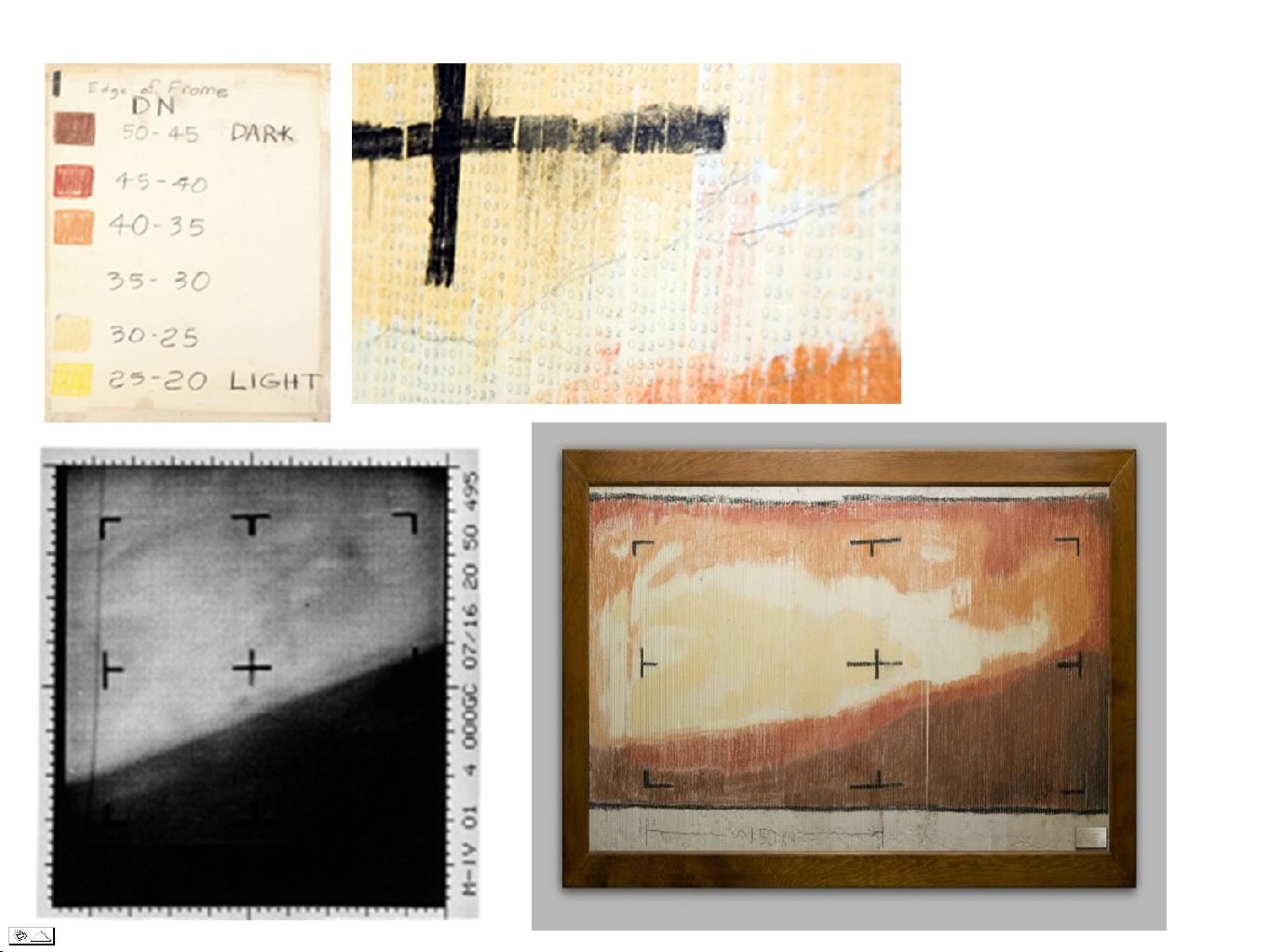
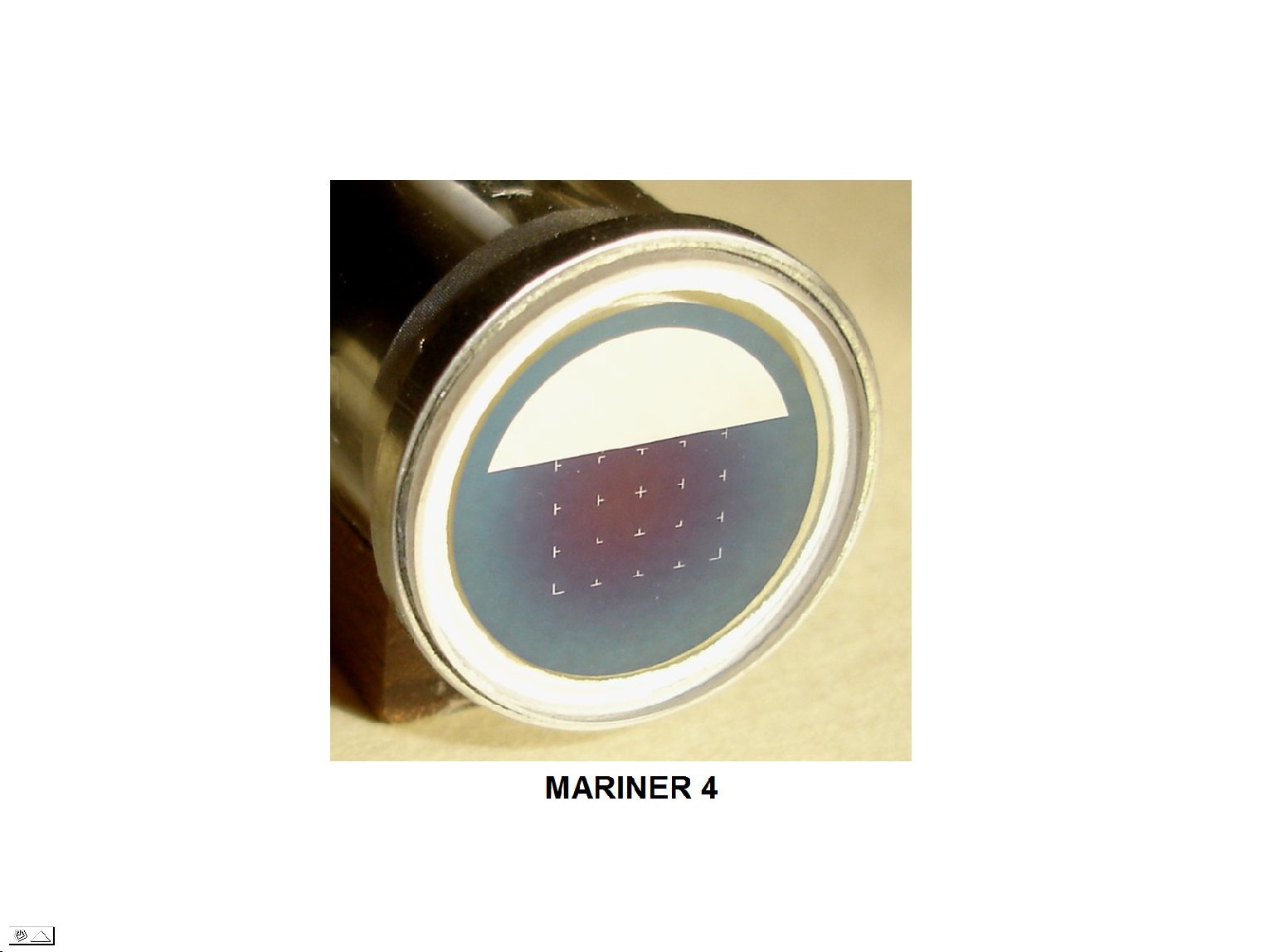
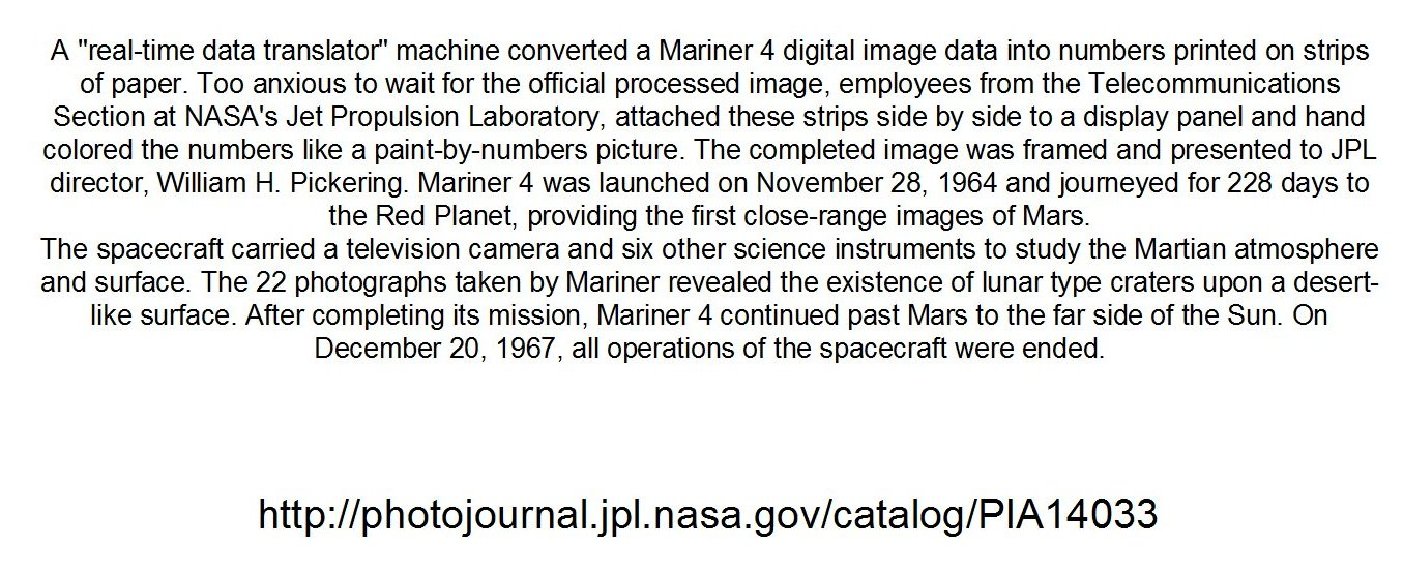
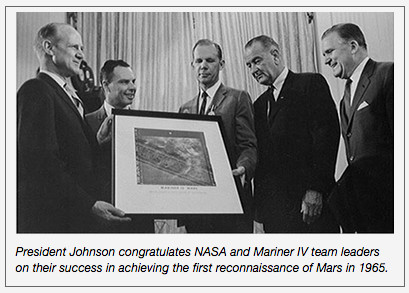
On the left Dr. Pickering, Directlor of JPL, center Jack James, Mariner 4
Project Manager, President Johnson second from the right.
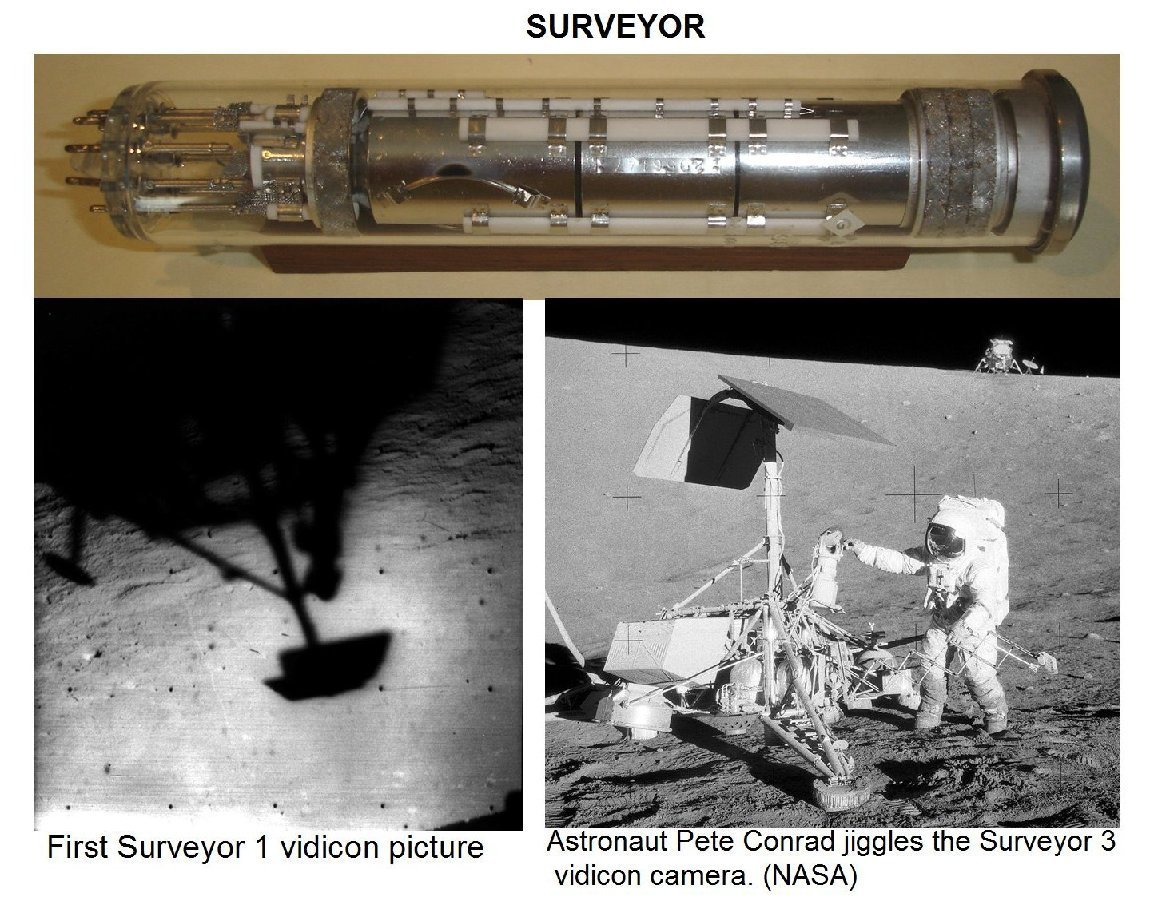
The Surveyor program was a NASA program that, from June, 1966 through
January, 1968, sent seven robotic spacecraft to the surface of the
Moon. Its primary goal was to demonstrate the feasibility of soft
landings on the Moon. The mission called for the craft to travel
directly to the Moon on an impact trajectory, on a journey that lasted
63 to 65 hours, and ended with a deceleration of just over three
minutes to a soft landing. The program was implemented by NASA's Jet
Propulsion Laboratory (JPL) to prepare for the Apollo program.
Vidicon tube photo by James Janesick.
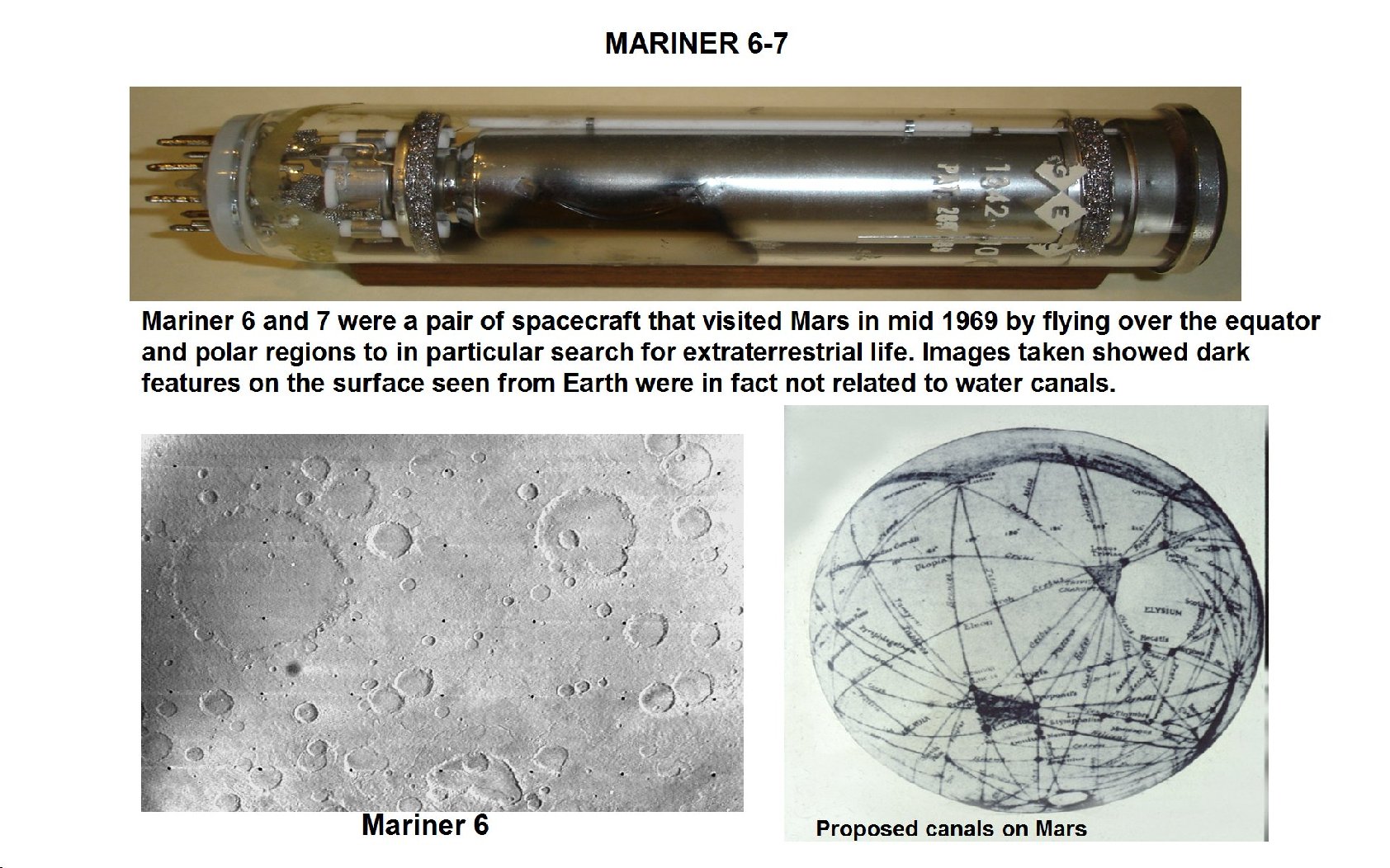
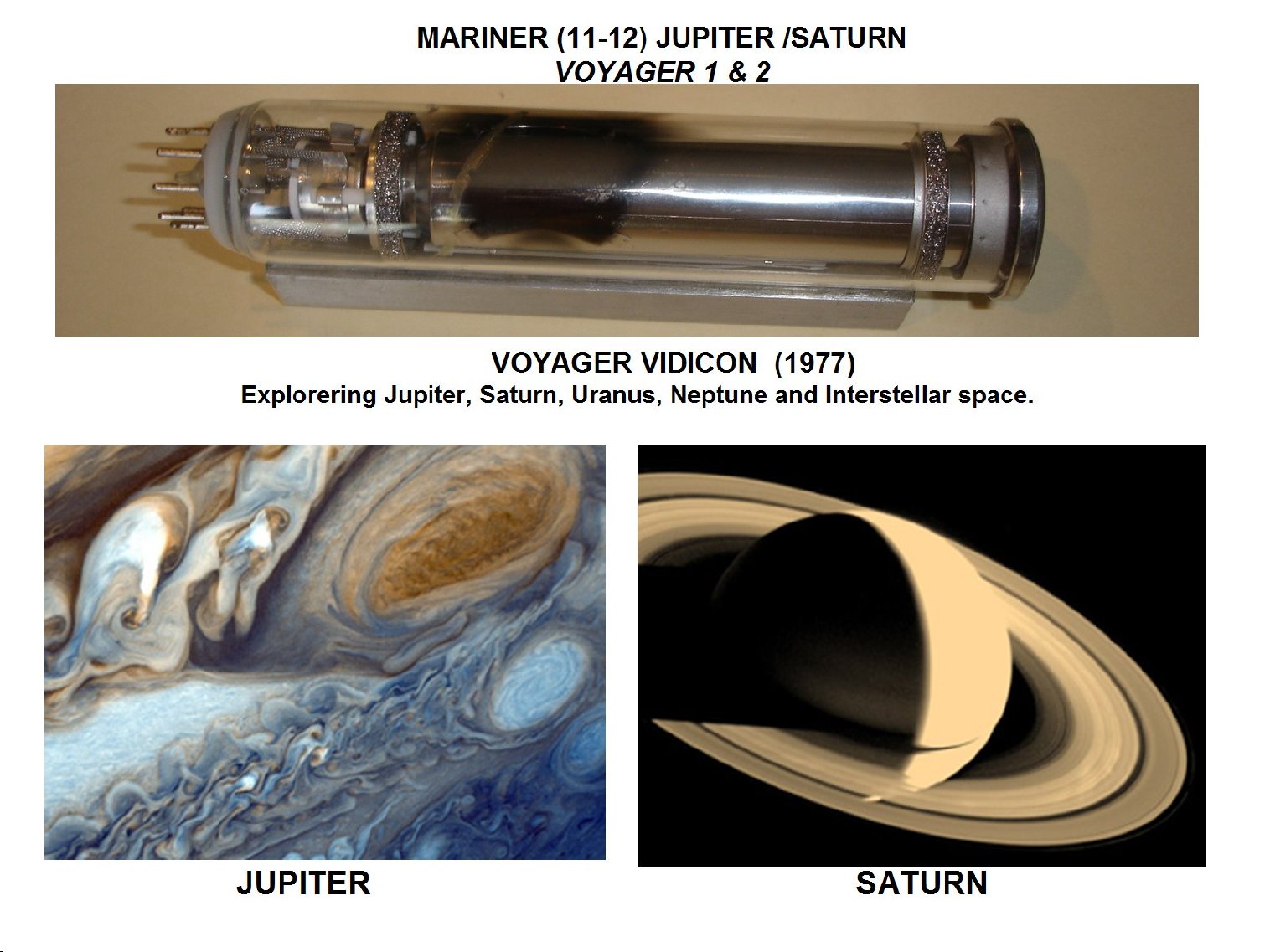

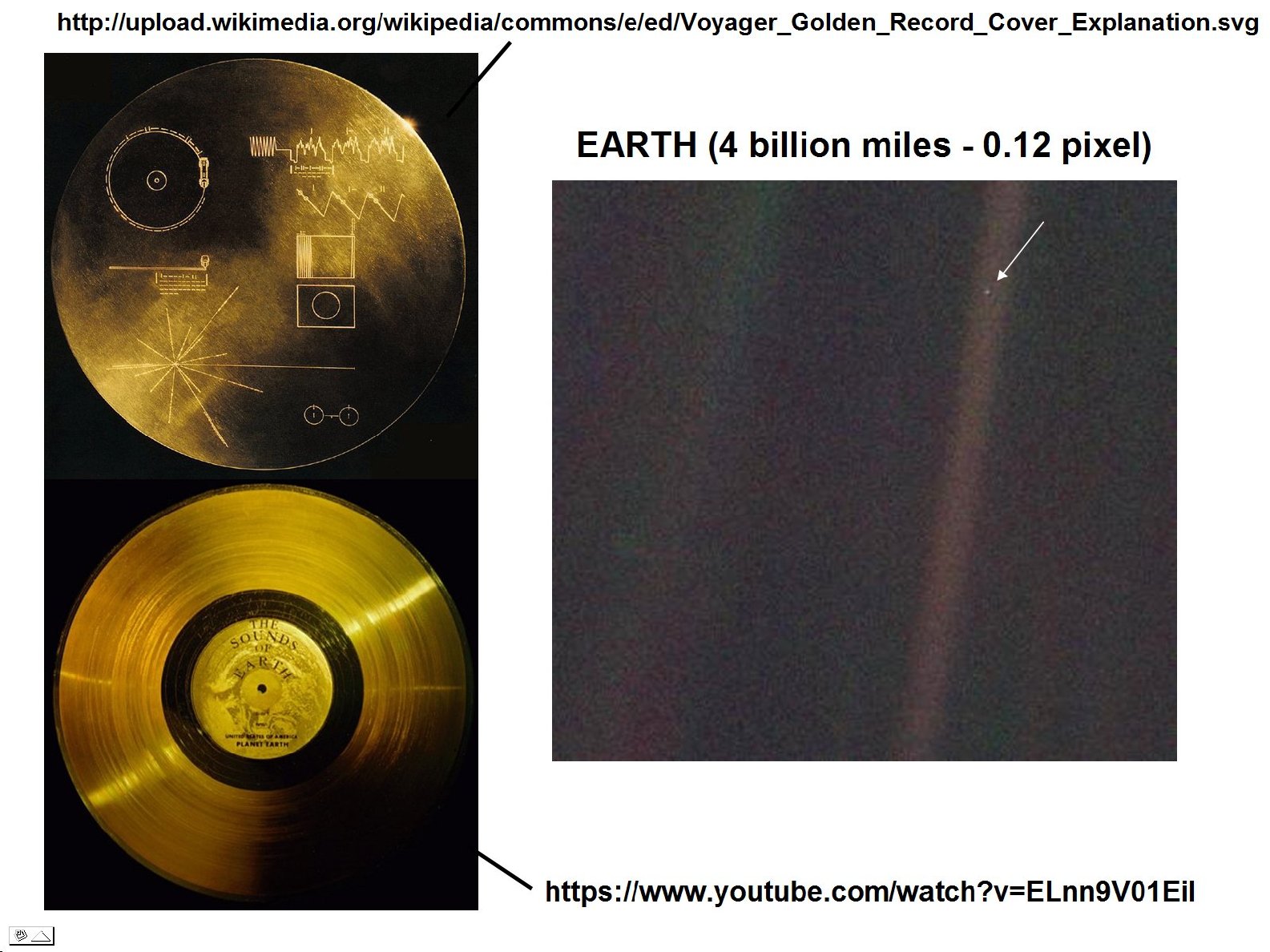
Explanation of diagrams on recording - http://upload.wikimedia.org/wikipedia/commons/e/ed/Voyager_Golden_Record_Cover_Explanation.svg
Voices and music recorded - https://www.youtube.com/watch?v=ELnn9V01EiI

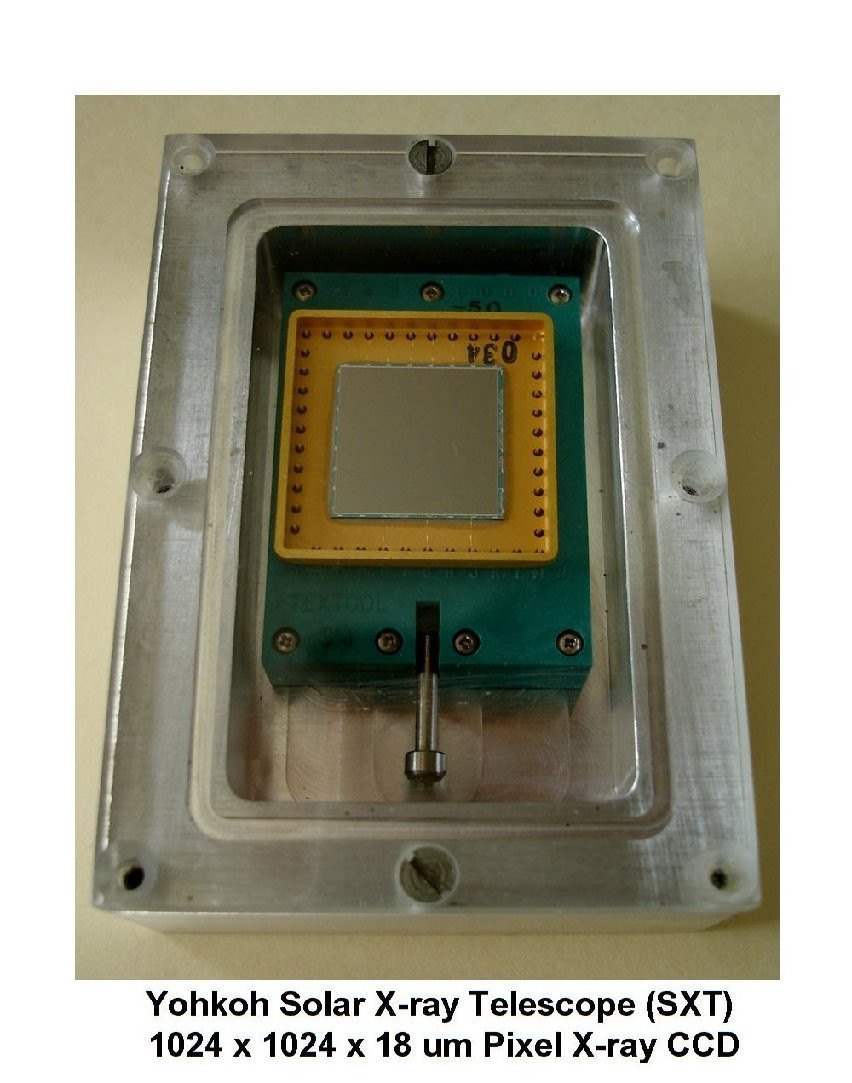
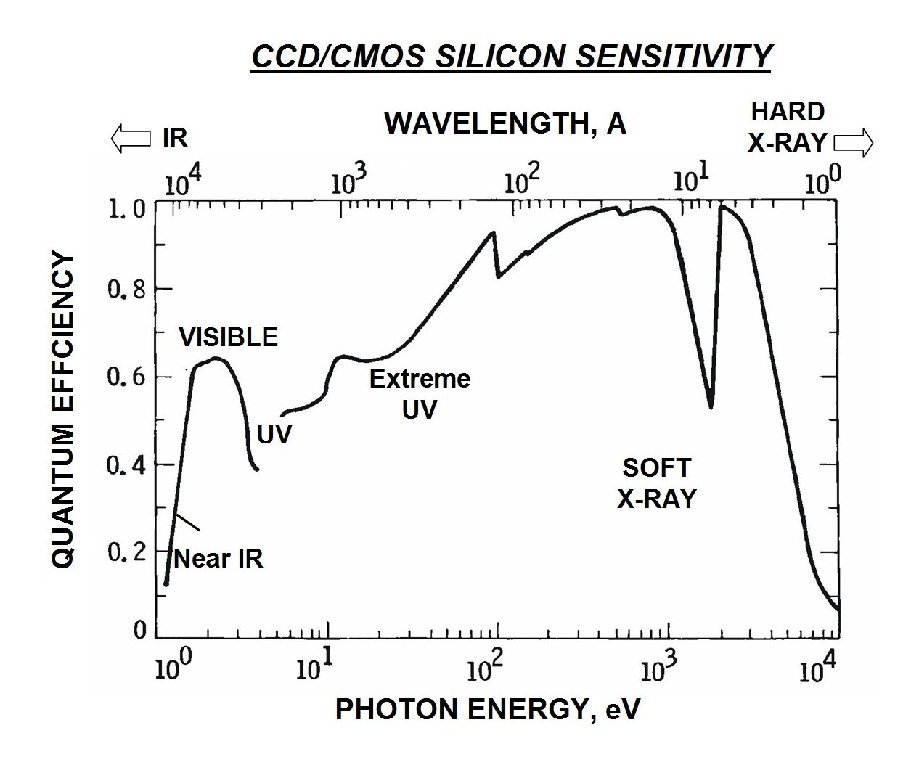

YOHKOH SOLAR X-RAY TELESCOPE (SXT) - 1991. The SXT was the first
X-ray camera launched into space. Janesick was involved with the SXT
mission
for five years and was responsible for the 1024 x 1024 x 18 um Virtual
Phase CCD flown as well as the associated analog electronics required
to read the device. Diagram
in the center illustrates the wide range of electromagnetic wave
sensitivity of CCD and CMOS imagers which makes them so valuable for
astronomical use in
addition to their extreme sensitivty to visiblel light. The photo
on the right is an X-ray image of the sun.

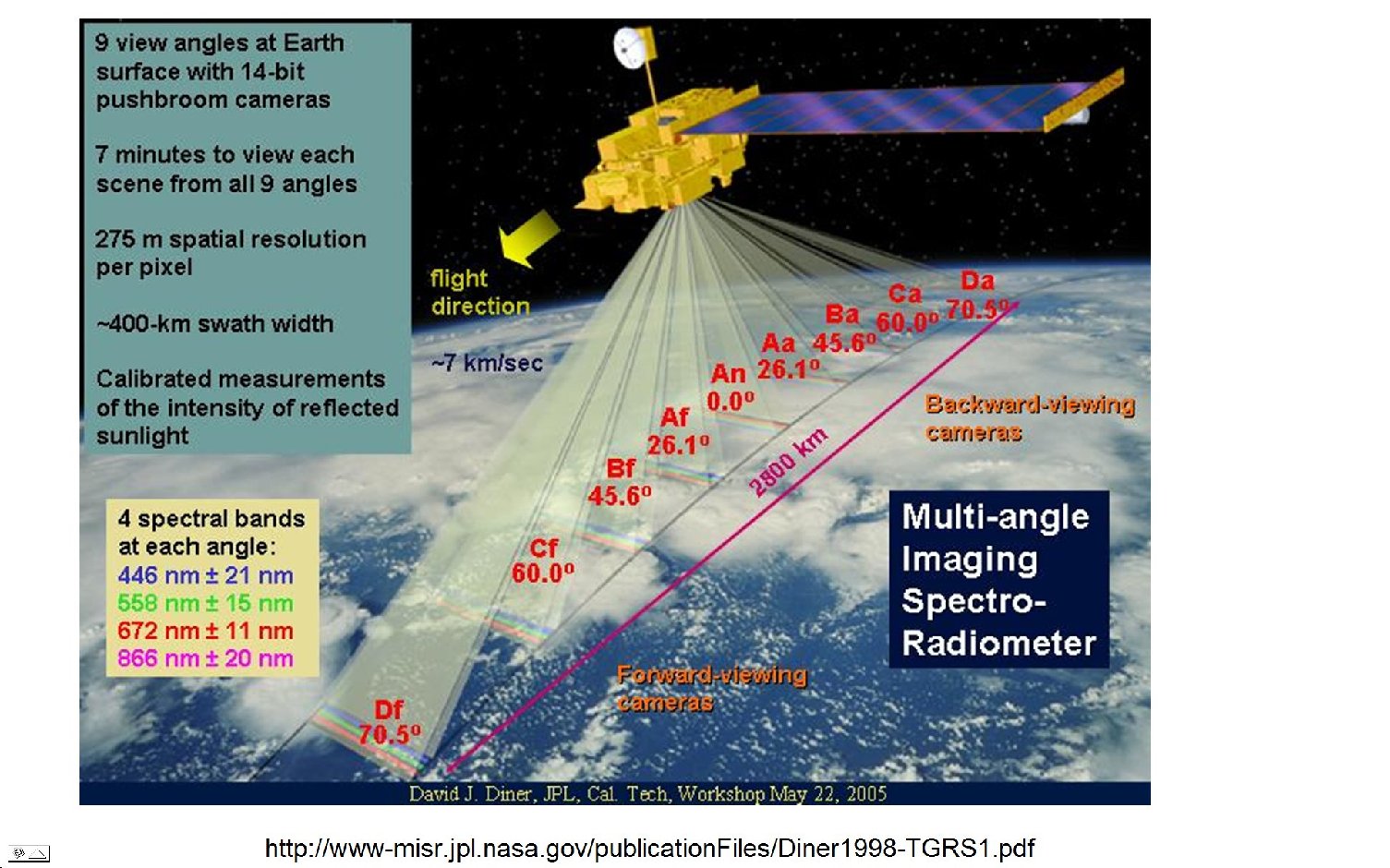
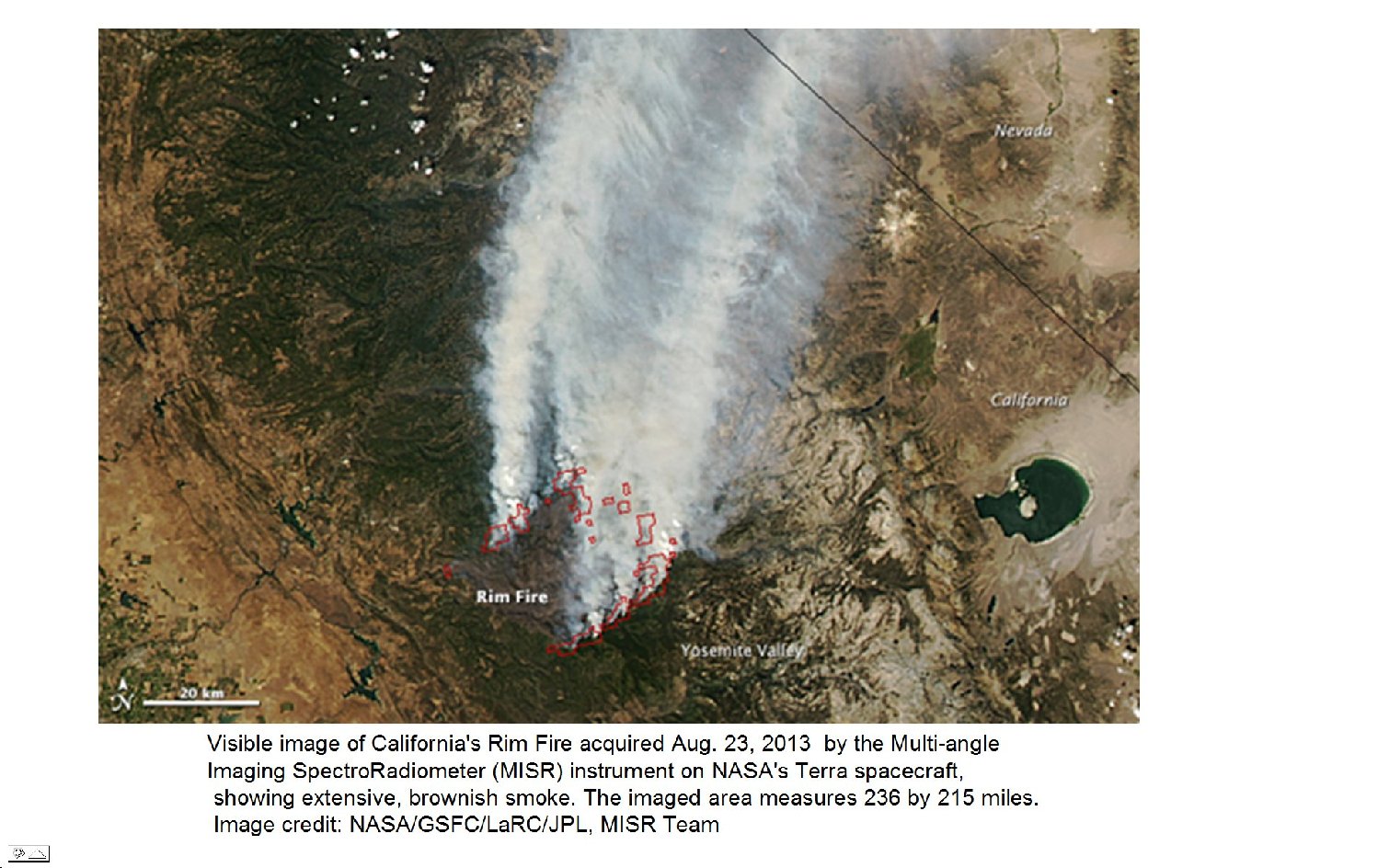
James R. Janesick CCD Patent information: http://www.google.com/patents/US5365092
MISR Information: http://www-misr.jpl.nasa.gov/publicationFiles/Diner1998-TGRS1.pdf
All above photos and information on this URL page provided by courtesty of James R. Janesick

















































